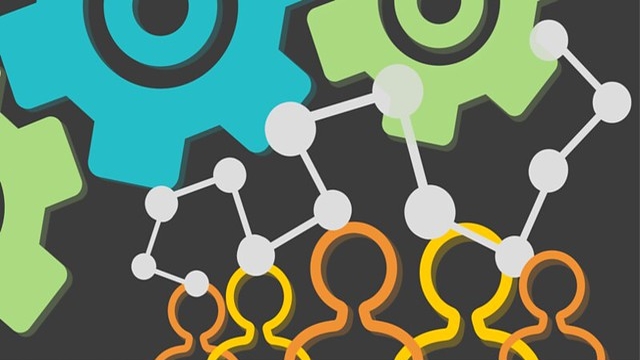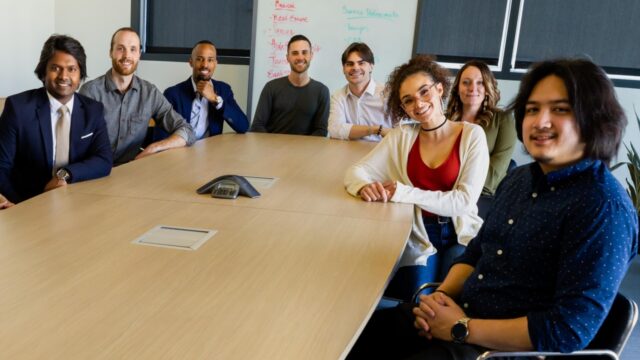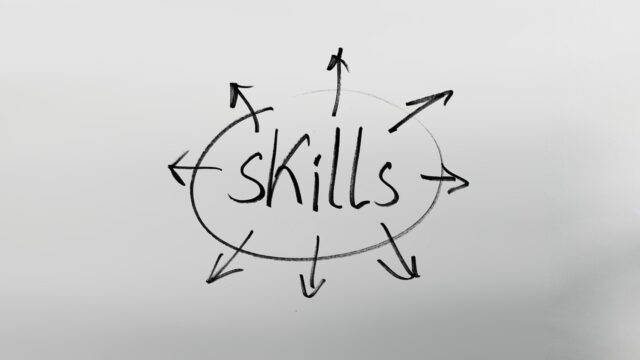
Diffusion of innovations
By James W. Dearing. Originally published on the Integration and Implementation Insights blog.
How – and why – do people decide to try new things?
Studies of diffusion have frequently demonstrated a mathematically consistent sigmoid pattern (the S-shaped curve, see figure below) of over-time adoption for innovations. Innovations include new beliefs, practices, programs, policies, and technologies.
The “S” shape is due to the positive engagement of informal opinion leaders in talking about and modeling an innovation for others to hear about and see. The initial slow rate of adoption gives way to a rapidly accelerating rate, which then slows as fewer non-adopters remain. Alternatively and more commonly, when informally influential people do not get positively engaged or when they ignore or actively reject an innovation, diffusion does not occur and the resulting slope of a cumulative curve stays flat or turns negative.

Key components of diffusion theory are:
- The innovation, and especially potential adopter perceptions of its attributes of:
- relative advantage (effectiveness and cost efficiency relative to alternatives),
- complexity (how simple the innovation is to understand and use),
- compatibility (the fit of the innovation to established ways of accomplishing the same goal),
- observability (the extent to which outcomes can be seen), and
- trialability (the extent to which the adopter must commit to full adoption);
- The adopter, especially each adopter’s degree of innovativeness (earliness relative to others in trying and adopting the innovation) and their readiness to adopt the innovation in terms of personal motivation to try the innovation and their capacity to do a good job using it to accomplish a goal;
- The social system, especially in terms of the structure of the system, its local informal opinion leaders, and potential adopter perception of social pressure to adopt;
- The individual adoption-process, a mostly stage-ordered model of awareness, persuasion, decision, implementation, and sustained use;
- The diffusion system, especially an external change agency and its paid change agents who, if well trained, correctly seek out and intervene with the client system’s opinion leaders, paraprofessional aides, and innovation champions, as well as the coordination among organizations that deliver and support the delivery of the dissemination of messages and the distribution of products that are necessary for effective implementation.
Awareness of an innovation can produce uncertainty about what an innovation is, how it functions, how well it works, and what the consequences of adoption and use will be. Uncertainty can propel the individual into a search for information to resolve the uncertainty they feel about how to respond to knowledge of the innovation. Either adoption or rejection can restore a sense of cognitive consistency (“I’m already doing the right thing and I don’t need this” or “This seems to have a lot going for it so I’ll give it a shot”).
Three sets of factors explain decisions about innovations:
- what the person thinks about the innovation in terms of its pros and cons, ie., the attributes or characteristics of an innovation;
- what the person thinks others think about the innovation’s pros and cons, ie., personal and social influence especially in the guise of informal opinion leaders;
- when the innovation is introduced to potential adopters and how they understand it ie., timing and the meaning people make of an innovation.
Needs or motivations differ among people according to their degree of innovativeness (earliness in adoption):
- the first to adopt (innovators) tend to do so because of novelty and having little to lose due to their low degree of social integration in the social system in question;
- the next to adopt (early adopters, including the subset of opinion leaders) do so because of a cost-benefit appraisal of the innovation’s attributes and their overriding sense that the innovation is good for the social system of which they are key members;
- and the subsequent large majority adopts because others have done so and they come to believe that it is the right thing to do (an imitative effect).
These motivations and time of adoption are related to and can be predicted by each adopter’s structural position in the network of relations that tie a social system together.
There are multiple contexts in which diffusion can occur, ranging from external-to-the-community “broadcast” models of diffusion in which mass media and change agents from afar introduce ideas into communities, through to internal-to-the-community “contagion” models of diffusion in which strong friendship ties, weak acquaintance ties, structural equivalence (similarity in network position as a basis for expecting similar adoption behaviors and timing), or proximity account for diffusion outcomes.
The work of rural sociologist, Everett Rogers, was instrumental in popularizing diffusion of innovations. Rogers grew up on an Iowa farm watching his father not adopt innovations, so trying to explain this regressive behavior and in turn perhaps helping to improve farming conditions among poverty-stricken farmers came naturally.
Increasingly, government agencies, private foundations and research teams are applying diffusion concepts to affect the rate of adoption and the reach of social innovations and thus move diffusion scholarship more systematically into the realm of intervention research.
What has your experience been? Have you found an understanding of diffusion of innovations useful in your work? Have you used it to encourage uptake of new ideas and practices?
Recommended reading:
Dearing, J. W. and Cox, J. G. (2018). Diffusion of innovations theory, principles, and practice. Health Affairs, 37, 2: 183-190. (Online – open access): https://www.healthaffairs.org/doi/10.1377/hlthaff.2017.1104
Green, L. W., Gottlieb, N. H. and Parcel G. S. (1991). Diffusion theory extended and applied. In, W. B. Ward and F. M. Lewis (Eds.), Advances in health education and promotion. Jessica Kingsley Publishers, London, United Kingdom.
Kapoor, K. K., Dwivedi, Y. K. and Williams, M. D. (2014). Rogers’ innovation adoption attributes: A systematic review and synthesis of existing research. Information Systems Management, 31: 74-91.
Rogers, E. M. (2003). Diffusion of innovations. Fifth edition. Free Press: New York, United States of America.
Biography:
 |
James W. Dearing Ph.D. is Brandt Endowed Professor in the Department of Communication at Michigan State University, East Lansing, USA. He studies the diffusion of innovations, including the adoption and implementation of new evidence-based practices, programs, technologies and policies. His research and teaching spans dissemination science, implementation science, program sustainability, and the psychological and sociological basis of the diffusion process. He works with research and practice improvement teams in environmental remediation, nursing care, water conservation, injury and fatality prevention, public health, and healthcare. |
Article source: Diffusion of innovations. Republished by permission.
Header image source: Created by Bruce Boyes with Perchance AI Photo Generator.






